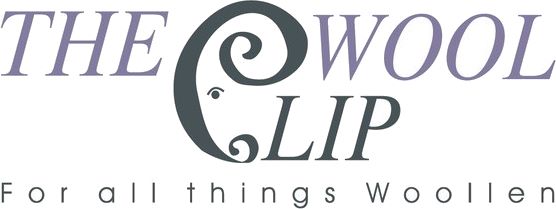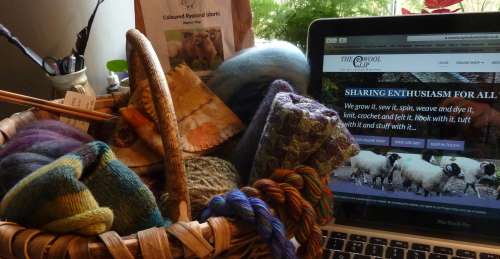We try to post here about significant changes such as new members of The Wool Clip and exhibitions by guest artists but, if you’d like to keep in touch with everything that’s going on, our social media channels are easily the most up-to-date source of news.
News
Cumbrian Yarn – what we’re all about
We've a new book on the shelves at The Wool Clip, Cumbrian Yarn, and we're featured in it!
With publication in February 2025, it seemed a good time to chat to the author, Beth Pipe, so she could share a bit of the story behind the book.
Why write about wool and yarn?
Steve (photographer and husband) and I have published all sorts of books on local Cumbrian history as well as travel books about gin distilleries and breweries in the county. As a keen crocheter, I wanted to know more about local wool too and it's turned out to be a good way of telling Cumbria's history in a different way.
Where did you start?
I tried to be as logical as possible and start with the sheep. The first chapter is all about the breeds, starting with the three native hill breeds (Herdwick, Swaledale and Rough Fell) and then including a few others that people might see and that make a valuable contribution to Cumbrian wool, like Bluefaced Leicesters, Jacobs and Texels.
Why write about wool and yarn?
Having talked to a lot of sheep farmers to cover that first topic, we then had to have a chapter about the people, in the past and today, who've created the sheep farming community and then it's gone on from there with chapters on the landscape, towns, fleece processing to yarn, knitting, designs and patterns, mills and much more.
Did anything surprise you about the people?
Not really – their shared enthusiasm was brilliant and I'd expected that. It was good to talk to several younger farmers as we hear a lot about the ageing farming population and it was striking that a lot of the business owners were older. A co-operative like The Wool Clip is good for encouraging newcomers to wool crafts and companies like Cable & Blake and Wools of Cumbria Carpets have younger people on their management teams too.
Which proved to be the most difficult chapter to write?
I think the impact of wool and sheep on the landscape. It was important to include it because the traditional farming has shaped Cumbria and the Lake District so much but there are also a lot of strong opinions about the future. It's certainly the most contentious chapter.
Are there any gaps in the sheep to wool goods story as far as Cumbria is concerned?
Yes, there are a few. It's not that people don't want to do everything locally but the small scale needed is not always available in Cumbria. For instance, despite the large number of sheep, there are no mini mills in Cumbria for spinning fleece into yarn so Wool Clip members Ruth and Alice take or send their fleeces elsewhere in the UK for scouring and spinning. Similarly, Wools of Cumbria Carpets source the fleeces and wool locally in Cumbria but the commercial spinning is done outside the county, although still in northern England.
Which is your favourite part of the story?
It's hard to choose but, as a history nut who lives in South Lakeland, the towns chapter was fascinating to research and it's made me see Kendal in a different light. There are so many old buildings connected to the wool trade that are hidden away in the Yards or sometimes in plain sight. Street and pub names often connect back to this wool history too – The Rainbow opposite the Town Hall is also just a few metres from a former dyeworks! For the launch party, Steve designed a self-guided walk around Kendal that takes in as many of these aspects as possible – it's amazing.
Cumbrian Yarn – The Wool that Binds the County is by Beth and Steve Pipe and is published by Amberley Publishing.
You can find out more about Beth (aka Cumbrian Rambler) and Steve and their other books via their website at https://cumbrianrambler.blogspot.com/.
Cumbrian Yarn is a paperback of 96 pages with 100 illustrations, most of them in colour, and it is priced at £15.99.
Weaving, dyeing, spinning and every other woollen process has featured in Cumbria in the past and the book covers that history.
Comments
By accepting you will be accessing a service provided by a third-party external to https://www.woolclip.com/
Contact Us
The Wool Clip
Priest's Mill
Caldbeck
Cumbria
CA7 8DR
Call: 016974 78707
Email: shop@woolclip.com
Opening Times: Tue to Sun 11am to 4pm
Cooperative Reg. Number 29320R









